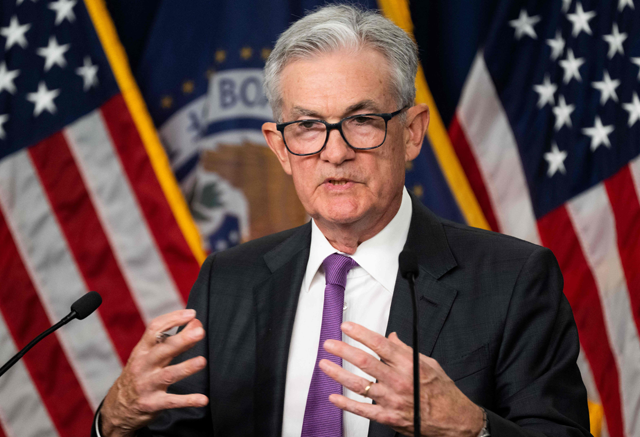You are here
US consumer inflation eases more than expected
By AFP - Jul 13,2024 - Last updated at Jul 13,2024
WASHINGTON — US inflation cooled more than expected in June, government data showed recently, a positive development for President Joe Biden as he fights to win confidence in his economic record in his reelection bid.
The consumer price index (CPI) rose 3 per cent last month from a year ago, said the Labour Department, as a drop in gas prices more than offset housing costs.
A measure stripping out volatile food and energy prices also saw the smallest annual rise since 2021.
"Today's report shows that we are making significant progress fighting inflation," Biden said in a statement.
While costs of cars and appliances are falling, he conceded that prices remain too high and pledged to "do everything I can for the working people that built our economy".
A consensus forecast of analysts initially expected consumer inflation at 3.1 per cent, down from 3.3 per cent in May.
The world's biggest economy has been on a bumpy path to reining in inflation, which soared to a blistering 9.1 per cent in mid-2022.
This prompted the central bank to rapidly hike interest rates in hopes of easing demand and bringing down price increases.
Federal Reserve Chair Jerome Powell told lawmakers this week that there has been "modest" progress recently.
In June, overall CPI declined 0.1 per cent on-month for the first time since 2020, Labour Department data showed.
The "core" CPI index excluding the volatile food and energy was up 3.3 per cent on-year, the smallest jump since April 2021.
Consumer boost
"The improvement on the inflation front recently is good news for growth in real disposable income, which matters for consumer spending," said Ryan Sweet, chief US economist at Oxford Economics.
He noted that spending "hit a lull" in the first half of the year.
The latest report adds to a series of encouraging data that could give officials confidence that inflation is coming down to their two-per cent target.
This, in turn, would allow them to start cutting decades-high interest rates.
The jobs market, another segment that Fed policymakers are monitoring, has also returned to a "strong, but not overheated" state, Powell said this week.
Rate cut possibility
A further deceleration in prices and labour market cool down would "support a change in message from the Fed" at its July policy meeting, said Rubeela Farooqi, chief US economist at High-Frequency Economics.
This could open the door to rate cuts as soon as in September, she said.
Futures traders largely expect officials to start rate reductions in September, according to CME Group's FedWatch Tool.
Economists generally anticipate a second rate cut by year-end as well.
Dan North, senior economist at Allianz Trade North America, said: "We still have a ways to go yet."
While shelter inflation has noticeably eased, he maintained that housing has been a major factor behind the stickiness of figures.
"I don't see relief in the housing market for some period of time after the Fed starts to cut rates," he warned.
"Even if the Fed starts cutting in September, it's going to be months and months before we see enough significant movement in the 30-year mortgage to make a difference," he told AFP.
Related Articles
WASHINGTON — The United States saw its biggest surge in inflation in more than a decade last month, government data said on Tuesday, hitting
LONDON — Britain's annual inflation rate dropped sharply in July to a 15-month low, official data revealed Wednesday, off the back of lower
WASHINGTON — The US Federal Reserve (Fed) is prepared to raise interest rates higher — and hold them there — to bring down above-target infl


















